Welcome to the complete Spain and Portugal itinerary planner. Enjoy the best of the Iberian peninsula and get ready for your next trip.

Planning Your Trip Through Spain and Portugal
Many describe Spain and Portugal as some of the most beautiful destinations in the world. And what’s not to like about them? They have gorgeous beaches, centuries-old buildings, delicious food, and a mild climate that attracts tourists even in the winter.
Best of all, they sit next to each other, so you can easily create an amazing Spain and Portugal itinerary and see all the best places in one trip.
I lived in Spain for years and frequently crossed the border into Portugal. But I know that it can seem overwhelming when you’re sitting down to plan out an itinerary for the first time.
And in case you want to move to a Spanish city, it always makes sense to visit first. And if you want to relocate to Lisbon, the same applies. Both Spain and Portugal have a significant expat population as digital nomads and retired folk make the most of the good weather and and laid back approach to life.
So, if you are not sure where to start, here’s a complete guide, including the best cities to visit, top hotels and restaurants, as well as some ideas for day trips in case you have extra time. Follow it as it is or adapt it to your budget and interests and have a fabulous time!
Disclosure: if you book or buy through any of the links on this page, we may earn a small commission at no extra cost to you.
Recommended
I love sharing the best travel resources I can find.
- I never book a flight without looking on Skyscanner first
- My favourite one stop shop for airport transfers, food tours & excursions is Get Your Guide
- Out of the big accommodation machines, I use Expedia and Booking.com the most
- I’ve hand-picked useful travel gear and tools for you in my Amazon shop. Never leave home without a travel adapter or collapsible water bottle. I’d also recommend these soft ear plugs and a sleep mask.
- Access all our planners and budget spreadsheets in the Travel Toolbox ©
- Plan the perfect road trip with our Road Trip Planner & Toolkit ©
- Use these packing cubes to make life so much easier on the road.
- Save on mobile phone roaming charges with an eSIM from Airalo.
How Many Days Do You Need for a Spain & Portugal Trip?
There’s so much to see in Spain and Portugal that you’ll probably need months or even years to explore everything. However, you can see the main cities and taste a bit of the local culture in about 14 days. Some people race through both countries in seven days but that is a push and you will feel rushed. Spending around 10 days in Spain and Portugal is a decent amount of time but you will still be moving pretty quickly.
How to Tour Spain & Portugal
All the big towns in Spain and Portugal are connected through direct flights that are shorter than 1 hour and 30 minutes, so if you want to travel fast, it might be worth adding in some flights. You can find some tips to get cheaper plane tickets here.
However, flights bring problems, from having to turn up early to possibly losing your luggage to missing out on all the landscapes and smaller places between the big cities. Plus, the costs (and time) adds up travelling out and back to airports all the time.
Instead, I’d recommend looking at some of the sleek, fast trains and hiring a car in a few places for a great Iberian road trip.
Top Tip: Don’t forget about travel insurance. When you are visiting so many cities in a row, the chances of losing your luggage or experiencing a delay increase.
When Is the Best Time to Visit Spain & Portugal?
The summer months are extremely hot in Spain and Portugal, so it can be uncomfortable to hop from one city to another at 40 degrees Celsius (or higher in Seville.) Having said that, there are plenty of things to be enjoyed during a summer in Spain.
It is better to visit in the spring (March to May) or autumn (September to October) when the weather is still warm, the crowds are smaller, and the hotel prices are that bit lower.
Or, you could be unusual and see what it’s like to visit Spain in winter.
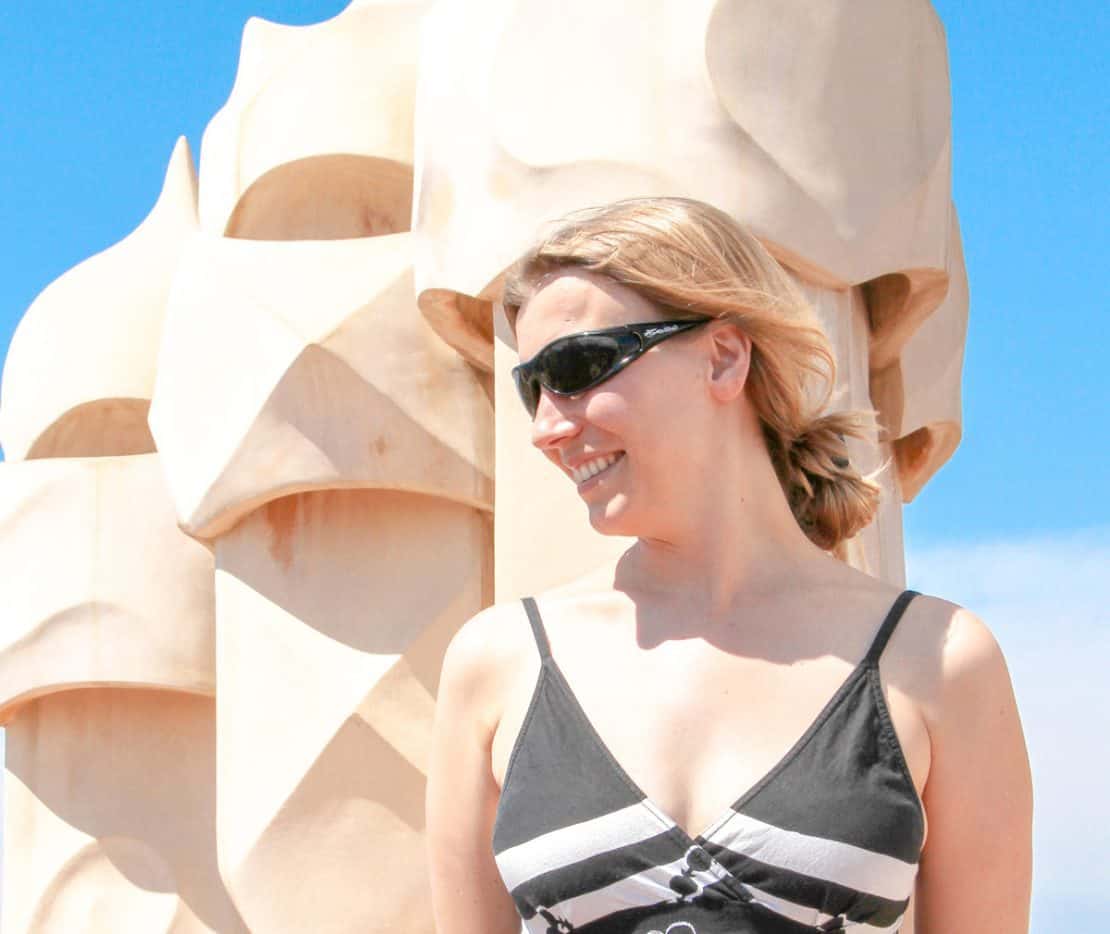
Your 14-Day Spain & Portugal Itinerary
This itinerary starts in Madrid, continues to two big cities in Portugal, and returns to Spain for more splendid destinations full of history and colour.
Madrid – 3 Days
The capital of Spain, Madrid, is a beautiful city, combining the charm of the old streets and churches with a more modern architectural vision. It is the first destination on your 14-day itinerary, and you have 3 days to explore its attractions and surroundings.
What to Visit in Madrid
One of the best ways to discover the main attractions in Madrid is to take a tour with a local guide. But you can also visit everything on your own if you are organised. We recommend using public transportation, as the streets are quite busy for a rental car.
Day 1
Puerta del Sol
As soon as you arrive, head to the city centre to discover one of its most famous sites. Puerta del Sol is the square where all major streets meet. Check out the famous clock that’s the centre of attention on New Year’s Eve, when locals and tourists gather in the square to celebrate.
Plaza Mayor
Grab a coffee or have a bite to eat in Plaza Mayor, a magnificent square in the centre of Habsburg Madrid. This is the oldest part of the city, thronging with souvenir shops, restaurants, bars, and street artists and musicians.
Mercado de San Miguel
Tasty and well-heeled, this much loved madrileño market sells fresh produce and tasty snacks, everything from pastry to charcuterie, Venezuelan corn, and vermouth.
The Palacio Real de Madrid
The Royal Palace in Madrid was inspired by Bernini’s sketches for the Louvre, rejected in France but put to good work in Spain, where this architectural jewel was built. The structure has more than 3,000 rooms, some with special themes. Take the Royal Chemist’s room filled with natural medicine cabinets, for example (you can check out the prescriptions the medics wrote to the members of the royal family.) Or the Royal Chapel, home to a magnificent collection of string instruments made by Antonio Stradivarius.
Catedral de la Almudena
Step out of the Royal Palace and enter the grand Catedral del la Almudena, consecrated by Pope John Paul II in 1993. It is the most important cathedral in Madrid and houses a museum with objects related to the life of the local patron saints. If you’ve got a good pair of lungs, climb the stairs to the dome for a splendid view of the city.
Day 2
Prado Museum
A huge art hub, the Prado houses over 8,600 paintings, so whatever you do, don’t plan on seeing them all. I would highly recommend booking a guide to help you understand and focus. Alternatively, Prado’s website suggests three itineraries that can help you find your way. Do not miss the highlights: the galleries dedicated to El Greco and the extended Goya collection.
El Retiro Park
In the afternoon, stroll around this huge park, recently declared a UNESCO World Heritage Site. It includes a large number of gardens and monuments spread across 125 hectares.
Snap a picture of the only statue in the world dedicated to the devil, the Fallen Angel, which sits at 666 meters above sea level, and check out the rare plants in the botanical garden. There’s also a puppet theatre that still holds shows, great for kids and adults.
Find out more fun facts about Madrid here.
Where to Stay in Madrid
Pick a hotel close to the centre to access the main attractions on foot. The Centro and La Latina areas are close to everything, including tapas bars and restaurants, and it’s easy to find a good stay here. You can also stay in Lavapiés or Huertas for a more colourful and bohemian atmosphere.
SLEEP’N Atocha and Petit Palace Triball come highly recommended.
Where to Eat in Madrid
La Latina is the best area for eating in Madrid, especially when you only have a few days. Check out Casa Lucas to try their famous black cannelloni, or take a seat at La Perjila for a plate of delicious tapas. If you fancy a steak, don’t miss Casa Lucio – it’s been sizzling since 1974.
Day Trips from Madrid
Dedicate one of the days when you’re based in Madrid to one of the nearby towns or villages for a taste of how life is outside the capital. We suggest Salamanca or Toledo.
Salamanca
A university city located 214 km from Madrid, Salamanca has earned a place on the UNESCO World Heritage Site list due to its splendid cathedral, the Monterrey Palace, and huge Plaza Mayor.
Toledo
Only 73 km from Madrid, Toledo is the former capital and something of a museum city reflecting the Jewish, Muslim, and Christian heritage of the people who built it. You can visit the Cristo de la Luz Mosque, El Transito Synagogue, and the Toledo Cathedral to see how cultures crossed in this city that attracted Goya and Picasso.
Getting from Madrid to Porto
- Plane: 1 hour 15 minutes
- Train: 7 hours 15 minutes
- Car: 5 hours 50 minutes
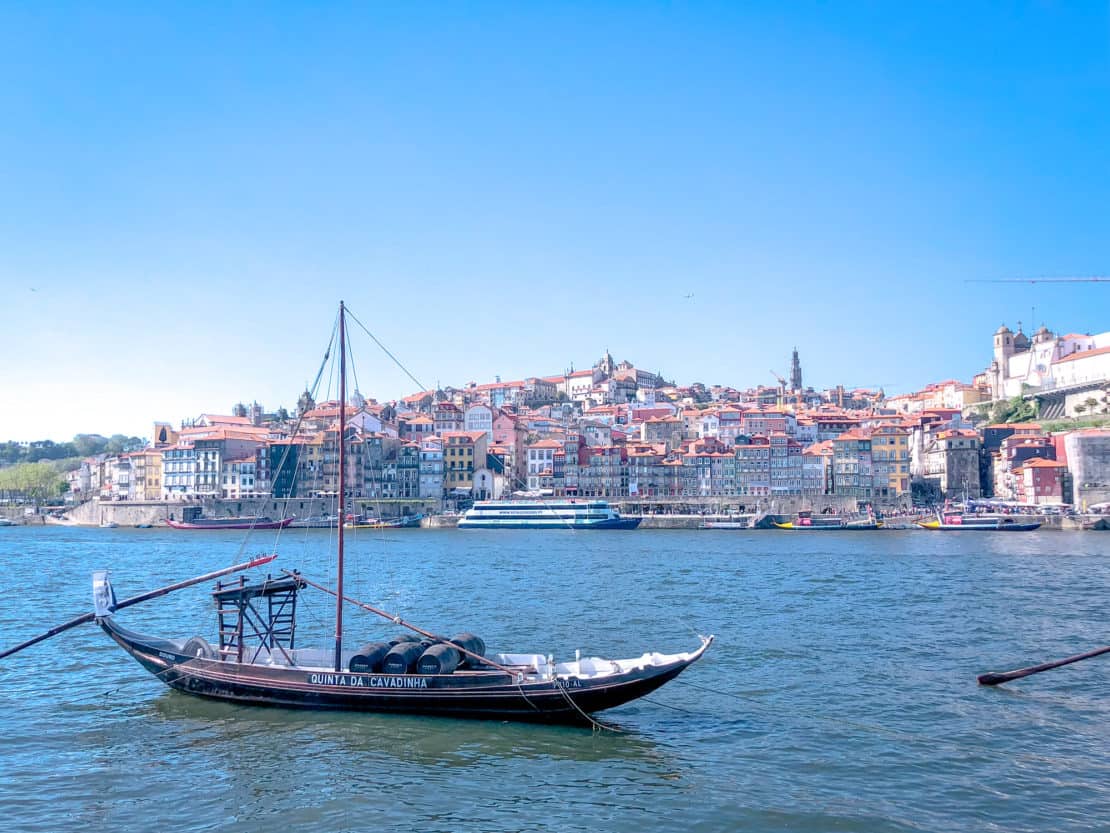
Porto – 2 Days
Cross the border and stop in Porto, a magically romantic city famous for its harbour and wines. See also our fun guide on unusual things to do in Porto.
Top Attractions in Porto
You only have one day to explore the city, if you choose to do a day trip on the next one, so you will need to concentrate on the big attractions only.
Livraria Lello
Book lovers will be delighted to discover the impressive number of novels, poetry books, scientific and historic treatises and so on, all gathered in what seems to be a reader’s paradise. But even those who haven’t read a book in a while shouldn’t miss this place for its exquisite neo-gothic façade and stunning interior. It’s said to have inspired Harry Potter.
Igreja do Carmo
The next stop on your 2-day Porto itinerary, Igreja do Carmo, consists of two buildings connected through a very small home. It used to be a convent, with one building housing the nuns and the other the monks of the Carmelite Order in Porto. The narrow house between them was built to help preserve the chastity of the nuns and the monks’ vow of celibacy. Today, it’s a museum.
Check out the ‘azulejos’ on the exterior of Igreja do Carmo, which are hand-painted blue and white tiles specific to the area.
Sao Bento Train Station
A masterpiece of azulejo art, the palace-like Sao Bento Train Station unravels its imposing façade just a few steps from the Cathedral of Porto. Inspired by the “Beaux-Arts” style, it has a large vestibule covered in almost 20,000 tiles that depict scenes of daily life in Northern Portugal. The grandeur of the vestibule, along with its large glass ceiling, is simply fascinating. And you’ll see plenty of people hanging out here, trying to get that instagram shot.
Chapel of Souls
Probably the most photogenic building in Porto, the Chapel of Souls sits in the middle of the main shopping street. You will immediately recognise its impressive exterior covered in the popular blue and white azulejos depicting different religious episodes like the death of Saint Francis of Assisi or the martyrdom of Saint Catherine.
Porto Cathedral
The Sé do Porto is the oldest cathedral in the city, built in the 12th century and expanded over the centuries. It combines the Romanesque style with Baroque and Gothic influences and is designed more like a fortress with massive walls. Spend a moment of peace in its beautiful forecourt and then head inside to admire its baroque interior. The star is the Baroque loggia, lovely decorated with azulejos.
Ribeira Promenade
Spend the evening in the dreamy Ribeira neighbourhood, discovering the historic centre and admiring the sunset from the Dom Louis I Bridge which connects the two banks of the Douro River. This area of Porto was declared a UNESCO World Heritage Site. And a beautiful one it is too.
Where to Stay in Porto
The Centro-Baixa and Ribeira are the best areas to stay in Porto due to their proximity to the main attractions. The PortoBay Flores is a popular hotel for its luxurious rooms and great service, but if you are looking for mid-range accommodation, Hotel Mercure Porto Centro Aliados offers everything you need at an excellent price.
Where to Eat in Porto
Porto is famous for its tapas, fish, meats, pastel de nata, and wine. Stop by A Bolina for a nice glass of wine over a plate of tapas, and visit O Caseirinho if you want to try an authentic Portuguese fish-based dish. For the best pastel de nata, Confeitaria do Bolhão is your place.
Day Trip from Porto: Douro River Cruise
On your second day in Porto, cruise along the Douro River and visit the Douro Valley, the region famous for producing grapes for the Porto wine. The river cruises start at Porto’s Ribeira pier and can last from a few hours to a whole day.
Porto to Lisbon
- Plane: 55 minutes (plus airport time)
- Train: 3 hours 23 minutes
- Car: 3 hours 10 minutes
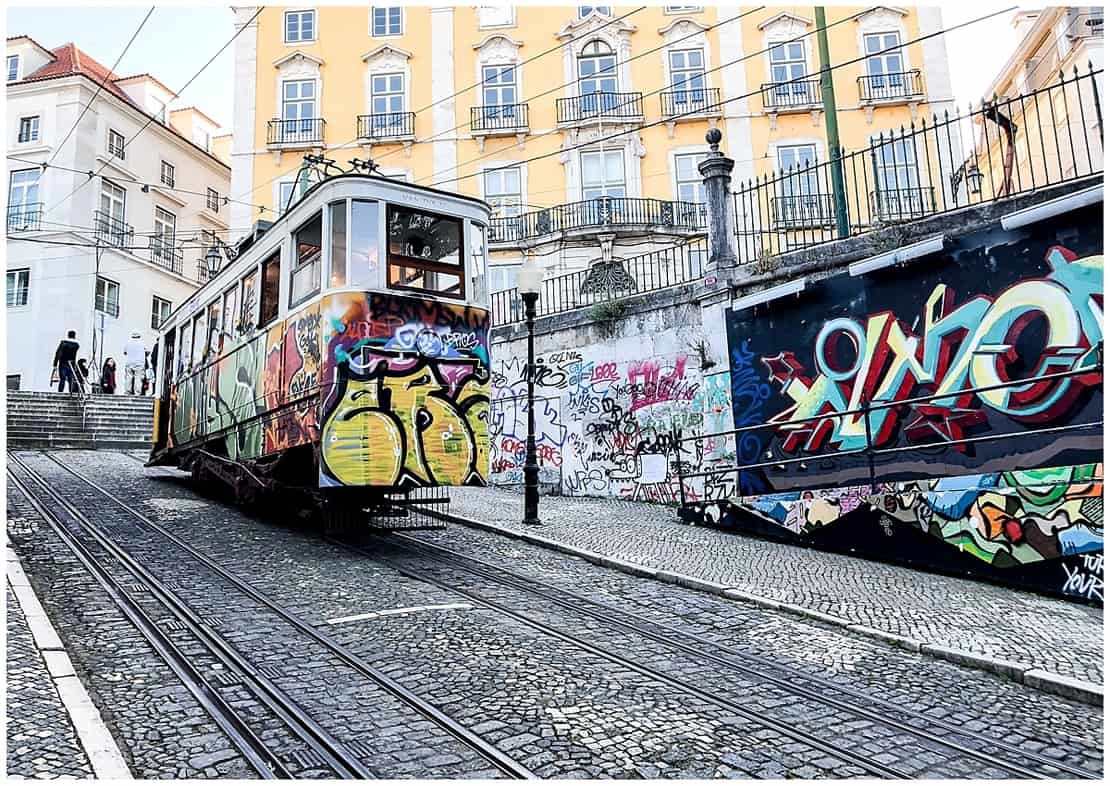
Lisbon – 3 Days
A 3-day Lisbon itinerary is the right amount of time to explore the city itself and take a road trip to one of the nearby cities. But if you have less time, you can skip Sintra or Cascais and head directly to Seville.
What to Visit in Lisbon
Lisbon is an acquired taste. Her joy lies in the tumbling ruins and steep streets, her shareable food and her people far more than her checklist of sights. So, don’t rush your first day in the city. Instead, try to connect to the general vibe.
Day 1
São Jorge Castle
Dating back to the 5th century, this huge castle sits on the summit of São Jorge hill, the highest point in Lisbon. It will take several hours to see it all, along with the small museum inside, so try to be there early in the morning to avoid the crowds. Climb to the top of the fortress for a magnificent view of the city.
Alfama
Next to São Jorge Castle, you will find the Alfama district with its massive cathedral, the St. Vincent Monastery, and the National Pantheon. Stop by the Lisbon Cathedral to see where St Anthony was baptised. And, if you are a literature lover, don’t miss Casa dos Bicos, where you will find an exhibition space dedicated to Nobel Prize winner Jose Saramago.
Santa Justa Lift
Step on this historic lift, which takes you from the Baixa neighbourhood to Bairro Alto. It has a wonderful observation deck that reveals the views over Baixa.
Chiado and Bairro Alto
Stroll around these picturesque neighbourhoods. Chiado is elegant and bohemian, with gorgeous cafes and theatres, whilst Bairro Alto is famous for its great fado restaurants and graffiti art.
Parque das Nações
If you still have time, spend the rest of the day at this modern park, which manages to include an oceanarium with over 25,000 sea creatures, the Vasco da Gama bridge and tower, the Lisbon Casino, and the Vasco da Gama Centre, a huge mall with stores and spaces for entertainment. Other iconic buildings to visit here are the Oriente Station, the turtle-like Altice Arena, and the Portugal Pavilion.
Day 2 – Belem
On your second day in Lisbon, leave the city centre and visit the Belem district at the mouth of the river Tagus. This is the place from where many Portuguese explorers set sail to other parts of the world, returning with incredible riches. Visit the Jeronimo Monastery (another UNESCO World Heritage Site) and the Belem Tower and stop at the Pastéis de Belém, the place where the delicious Portuguese egg tarts were invented.
Where to Stay in Lisbon
Baixa is the most popular neighbourhood in the city, with lots of accommodation options. But the Rossio, Chiado and Cais do Sodre are close to the biggest attractions as well. If you want a 5-star hotel, book a room at the Avenida Palace, or go for Hotel Santa Justa for something more mid-range.
- Look at our guide on the best places to stay in Lisbon here.
Where to Eat in Lisbon
The food in Lisbon is simply divine, and there are plenty of restaurants cooking it to perfection. Choose Invicta if you crave fish or langoustines plucked fresh from the ocean.
Food writers say that the best octopus in town is served at Frade dos Mares, and Floresta Das Escadinhas is genius when it comes to ribs.
For more about what to eat in Lisbon, check out our Lisbon food guide here.
Day Trips from Lisbon
If you can spare one more day, take a short trip to the nearby spots of Sintra or Cascais. The easiest way to get there is by car or bus, although you can manage a train and bus combination to Sintra, if you don’ t mind a steep climb at the end.
Sintra
Sintra is a sight to behold, full of colourful whimsy, history and heritage. UNESCO World Heritage. Visit Vila Palace, the former summer resort of the Portuguese kings, and then stop at the glorious Pena Palace which overlooks the town from its hill.
Cascais
Even if you don’t have much time, you can pay a quick visit to the fishing village of Cascais, which is only half an hour from Lisbon. Lots of shops and restaurants and sunny beaches make this place worth visiting. It is also famous for its fresh fish and shellfish, so you are in for a feast.
- Recommended reading: the best souvenirs from Porto
Lisbon to Seville
- Plane: 55 minutes (plus airport time)
- Train: 6 hours 45 minutes
- Car: 4 hours 25 minutes

Seville – 2 Days
Cross the border again, this time to discover Southern Spain, where sun-kissed beaches and century-old buildings are only two of the best things to explore.
Seville Tourist Attractions
Day 1
Seville Cathedral and La Giralda
All visits to Seville find themselves in front of the Catedral de Santa Maria de la Sede, or simply the Seville Cathedral. Only by St Paul’s Cathedral in London and St Peter’s Basilica in Rome surpasses this monumental building in size.
The main point of focus is the tomb of Christopher Columbus, but the collection of gold and jewellery is something to behold.
The main cathedral tower is the landmark of the city and nicknamed La Giralda. The geometric patterns give away its youth: it was first part of a mosque which once stood upon this land.
Real Alcázar of Seville
Next on, the Royal Alcázar of Seville is a spectacular palace with a lush garden and sumptuous decorations. It was here that Columbus applied for funding for his voyage to “India” and here, too, where the Game of Thrones filmed their palace in the Kingdom of Dorne. Today, it is also a UNESCO World Heritage Site, although for the former rather than latter fact, I believe.
Barrio Santa Cruz
Leave the grand buildings behind and wander through Seville’s most tight-streeted neighbourhood, the former Jewish Quarter in the city. Step by the Centro de Interpretacion Juderia de Sevilla to learn more about their tragic history. And elsewhere, enjoy the bodegas and boutique shops which have sprung up around this lively part of the city.
Casa del Pilatos
The second most beautiful palace in Sevilla, Casa del Pilatos, was inspired by Pontius Pilate’s house in Jerusalem. It combines the Gothic, Italian Renaissance, and Mudéjar styles in an architectural masterpiece decorated with marble columns, azulejos, and flowers. Spend some time in the garden before ending the day on the Guadalquivir River waterfront.
Day 2
Plaza de Espana and Maria Luisa Park
On the next day, visit Maria Luisa Park, which displays a spectacular collection of Mediterranean trees and plants. It is an oasis of peace in the middle of the town, providing a sweet relief for locals and tourists alike during the summer.
Next to the park, you will find the Plaza de España, a grand affair built for the 1929 Ibero-American exhibition.
Museum of Fine Arts
Probably the second most important museum in Spain after the Prado, the Museo de Bellas Artes in Seville sits in an old monastery building. The façade of the building, as well as the interior, is exquisite, and the collections are not something to miss. Here’s a taste: El Greco, Velásquez, Zurbarán, and Murillo.
Where to Stay in Seville
As in most cities, the city centre is the best place to stay, and you have some fabulous hotels here that seem to be the smaller copies of the palaces in town – the Boutique Hotel Casa del Poeta and the Hotel Gravina51, for example. For a picturesque view and more affordable prices, you can book a room in Barrio Santa Cruz – we recommend H10 Casa de la Plata.
Where to Eat in Seville
Sevilla is home to lots of upscale restaurants where you can try divine dishes in a gorgeous venue, often decorated with plants and small trees. Ispal Restaurante is one of the most popular places in town, and you will have a lovely time here, but if you want a royal experience, try the Michelin-starred Restaurante Az-Zait.
Day Trips from Seville
Andalusia, the region around Seville, deserves a road trip of its own. And that’s why we wrote one here. However, if you don’t have time for that, you can arrange for some absolutely spectacular day trips to three of the south’s big hitters: Cordoba, Granada, or Malaga.
Cordoba
The Mezquita in Cordoba is one of the most beautiful buildings in the world. Cordoba itself is a fragrant, picturesque Andalusian town. It’s the perfect place to sip on a lemonade or tinto de verano and watch a flamenco performance on one of the lively terraces. But it’s the UNESCO World Heritage Site of the Mezquita, a mosque turned into cathedral, which will linger in your memory for decades to come.
Granada
At the foot of the Sierra Nevada Mountains lies the wonderful city of Granada. It’s lively, it’s pretty, it’s fun. And it’s the closest city to the UNESCO World Heritage Site of the Alhambra, a masterpiece of a Moorish palace and a symbol of defeat and despair. See this Alhambra quote Do not weep like a woman…
Malaga
Beach lovers should head to Malaga for a relaxing day in the sun. It’s not all about the beach (although it can be if you want it to be.)
Malaga is also the birthplace of Picasso, with a museum dedicated to the artist, and an extremely lively town offering tapas and nightlife galore.
Seville to Barcelona
- Plane: 1 hour 35 minutes
- Train: 5 hours 54 minutes
- Car: 9 hours 15 minutes
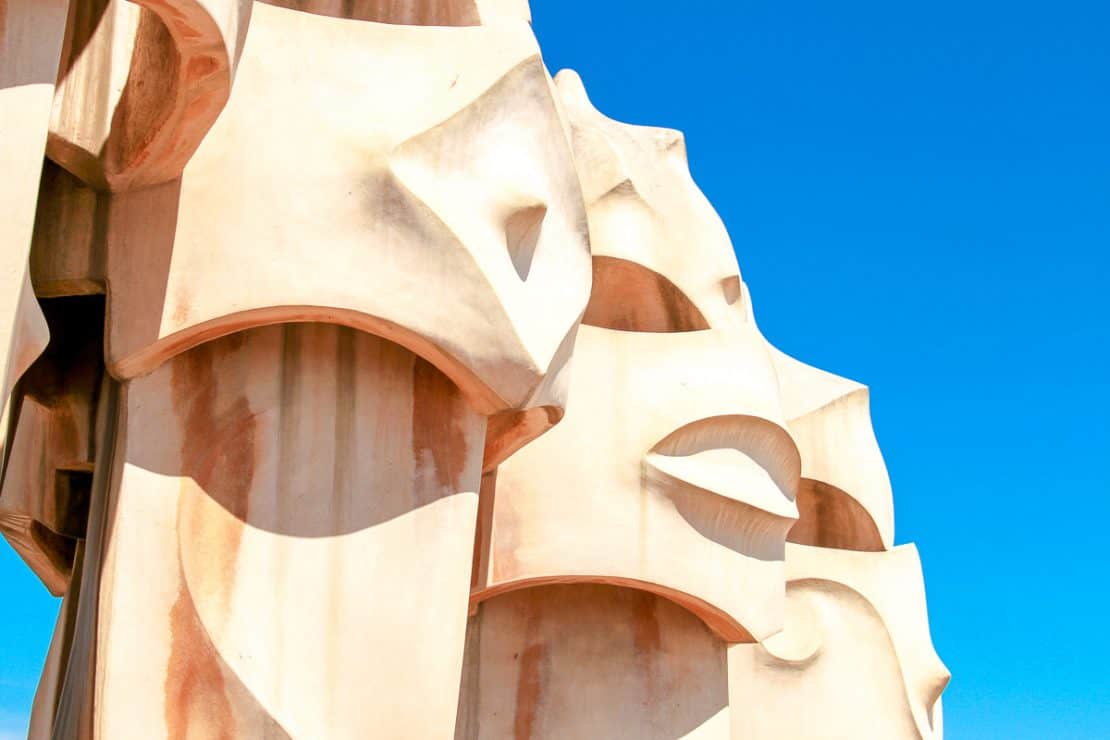
Barcelona – 3 Days
The last stop on your Spain-Portugal trip, Barcelona is the heart of the autonomous region of Catalunya, and a popular spot, receiving over 8 million visitors each year.
Barcelona Tourist Attractions
Day 1
Sagrada Familia
The most iconic building in Barcelona, the Sagrada Familia, is still under construction. And it has been since 1882.
It is the work of the famous Antonio Gaudi, and like no religious building you’ve ever seen. The best way to visit the basilica is to take a walking tour with a local guide who will give you more information on Gaudi’s vision and the history of the place. Also, book in advance, as tickets to the Sagrada Familia quickly become sold out.
Sant Pau Recinte Modernista
This complex was built at the beginning of the 19th century to serve as a garden city for nursing the sick. It is an exceptional architectural ensemble built in the Art-Nouveau style and declared a World Heritage Site in 1997. A visit here will take you through the history of medicine in Barcelona whilst you admire an outstanding architectural piece.
Park Guell
Barcelona and Gaudi are two inseparable entities. Barcelona left its mark on Gaudi, and Gaudi left his mark on the city. And Park Guell is a prime example. Spend a few hours in this park, considered one of the most iconic Modernist works in the world, and visit the Gaudi House and Museum to learn more about the most loved architect of Barcelona.
Camp Nou
A temple for football worshipers, Camp Nou is the mythical stadium of the beloved FC Barcelona. You can take a tour of the stadium and then visit the museum inside. It is the best place to buy yourself a nice FC Barcelona souvenir.
Tibidabo
If you are not a big football fan, you can skip Camp Nou and head to Tibidado, a 520-meter mountain. Besides the dramatic views, it is a place of fun, housing an amusement park with a Ferris wheel and a roller coaster.
Day 2
Casa Batlló
Start your second day in Barcelona at Casa Batlló, another famous Gaudi masterpiece built between 1904 and 1906. Admire the colourful façade and step in to visit the former residence of the Batlló family bathed in light.
La Pedrera
Also known as Casa Milà, La Pedrera got its name from its rocky exterior. At the time, the neighbours found this quite unusual, if not downright ugly. When it was built, it completely broke with the conventions of the time. And, yes, it is another fine piece of work from Gaudi.
Montjuic and the Magic Fountain
For an impressive show with music and lights, visit the magic fountain of Montjic in the evening. It usually plays classical music, and is a great place to relax.
Where to Stay in Barcelona
The best neighbourhoods to book a room in Barcelona are Barri Gòtic, La Rambla, and El Raval since they are close to the centre. For a luxurious experience, you can stay at the Serras Barcelona or Seventy Barcelona.
Where to Eat in Barcelona
Bodega Biarritz 1881 has a long history of serving delicious tapas and local dishes, so it’s worth visiting. We also recommend L’Antic Bocoi del Gotic if you want to try a Barcelona fish speciality.
Day Trips from Barcelona
On one of your three days in Barcelona, visit Costa Brava or Sitges for a more small-town vibe.
Costa Brava
Barcelona has a wonderful beach, but Costs Brava is an entire coast of beaches, with inland mountains, volcanic craters and more. You can spend a full day driving around the coast, stopping to visit the medieval city of Girona, zipping off to Michelin starred museums and taking in the surreal nature of the Dali Museum.
Sitges
At only 39 km from Barcelona, this town is fully surrounded by nature and has a charming historic quarter. It is once again a beach destination that attracts sun worshippers every year. It has an overall bohemian vibe and used to be a meeting point for poets and artists at the end of the 19th century.
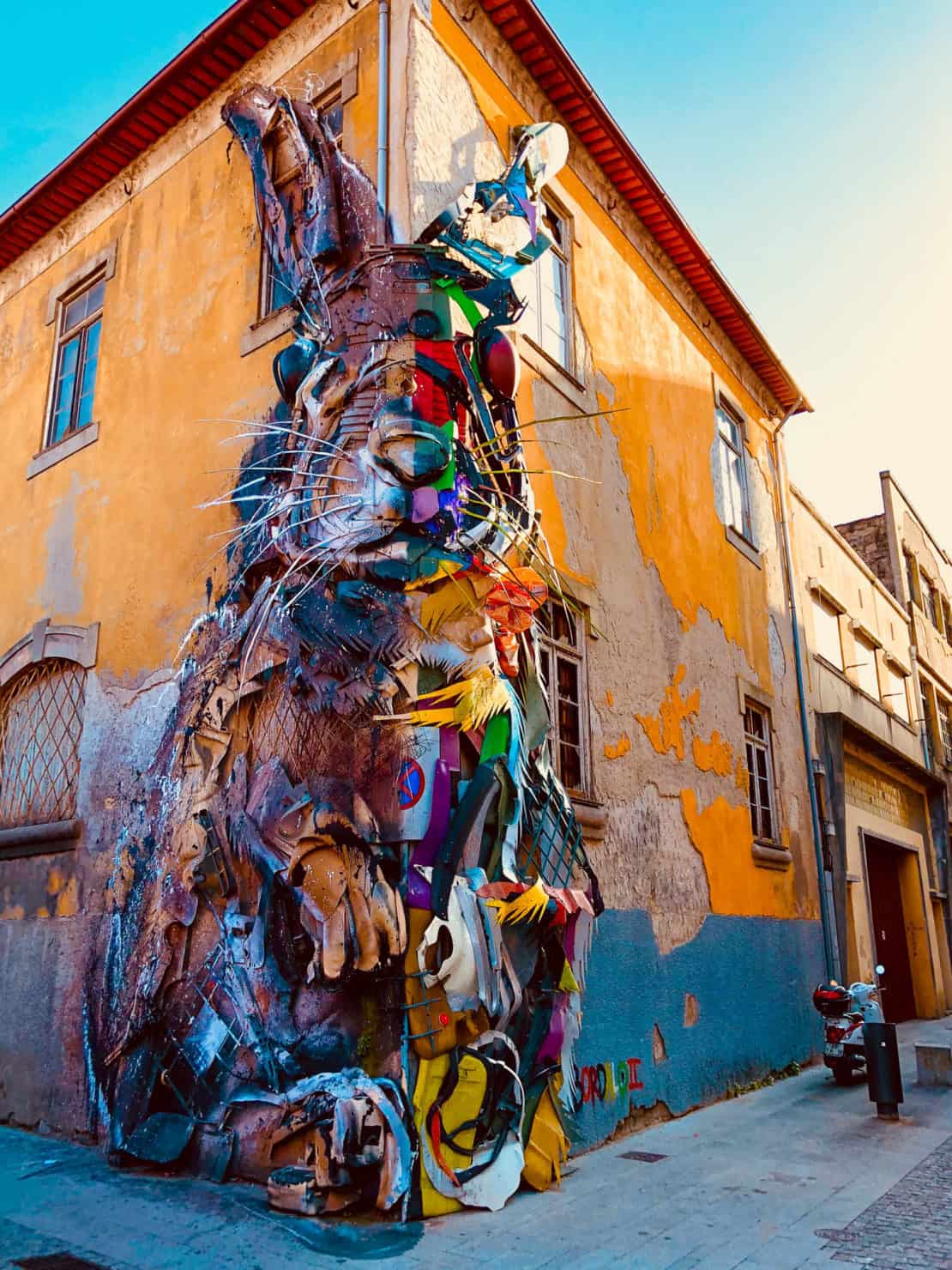
More Ideas for Your Spain and Portugal Itinerary
As you can see, this Portugal and Spain itinerary takes in a lot in two weeks. But it also misses a lot out.
There are so many more wonderful road trips through Spain to take. So many more city breaks to enjoy.
In the north, you can visit the Guggenheim Museum in Bilbao and discover the religious (and foodie) heritage of San Sebastian. A road trip through Asturias reveals magical mountains and delicious food, and the coast of Galicia can keep you entertained as well.
In the south, you can spend one or two weeks driving around Andalusia in southern Spain or spend a week roaming through the Algarve or walking the overlooked Costa Vicente in Portugal.
Looking for a slightly different experience? Check out our review of the Avalon Alegria Douro River Cruise.
More Travel Articles about Spain
- The Spain quiz for curious people
- 49 Interesting facts about Spain
- Spain in one week: an itinerary for your first time in Spain
- How to plan a road trip through Andalucia
- Galicia: how to travel through the salty north of Spain
- The best road trips in Spain
- How to spend a summer in Spain
- Bilbao or San Sebastian for your next trip?
- The ultimate Spain packing list

